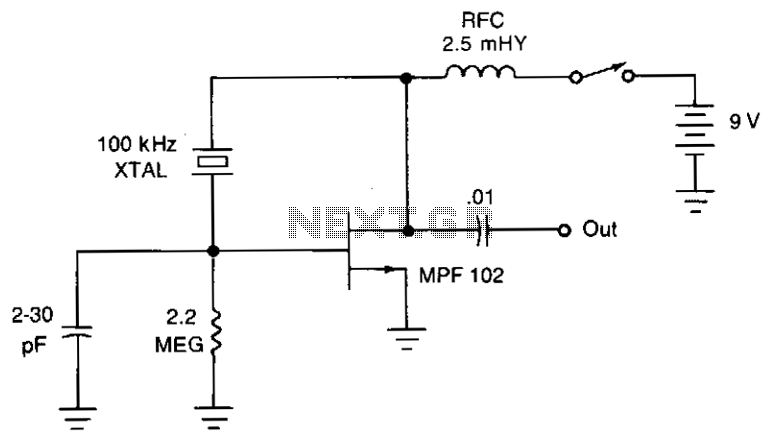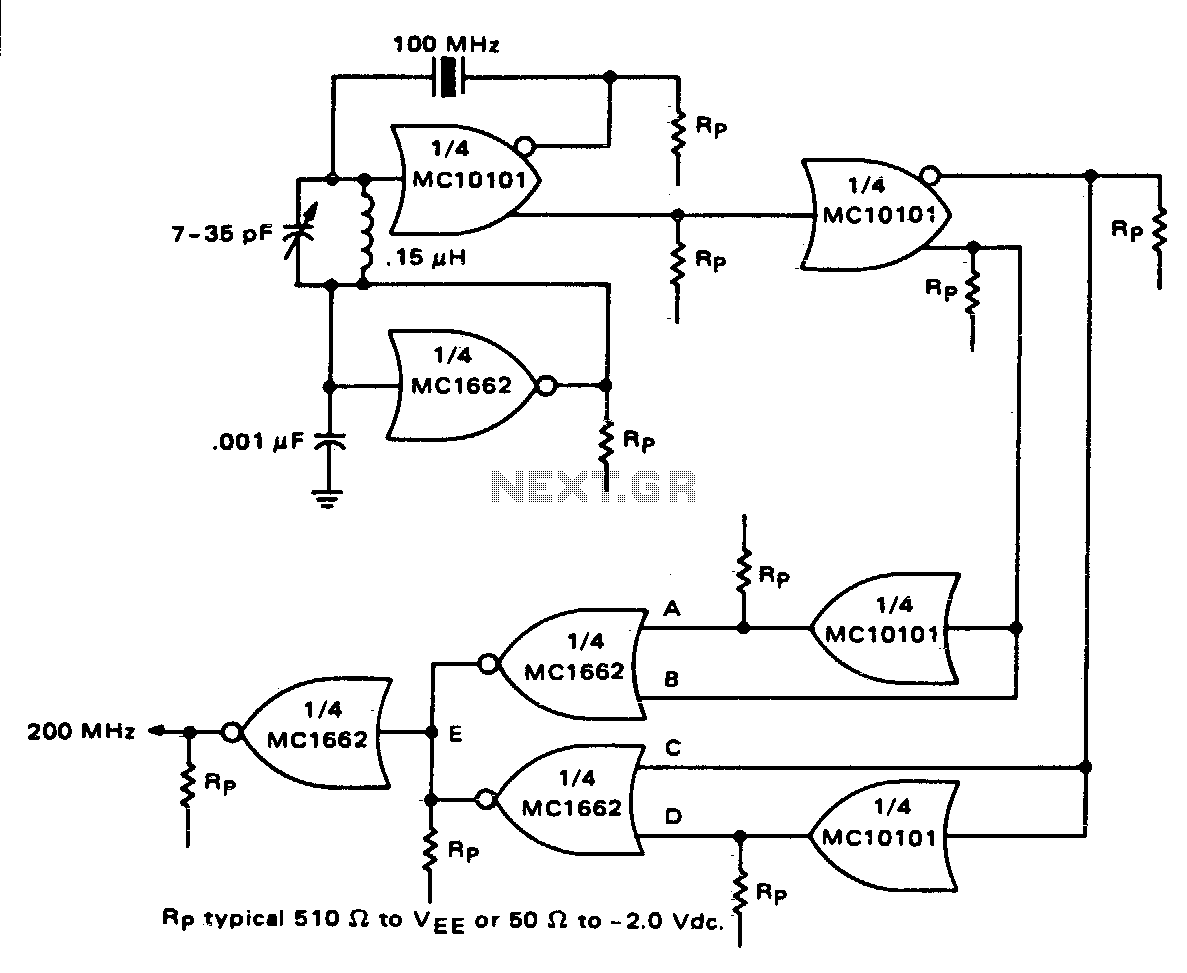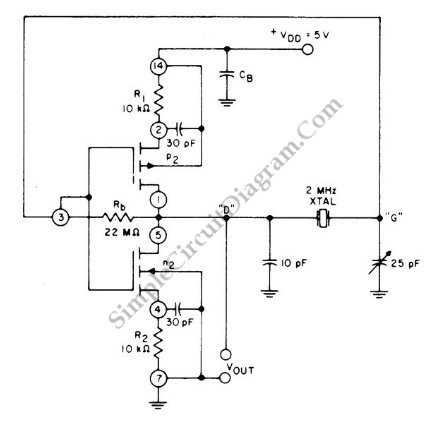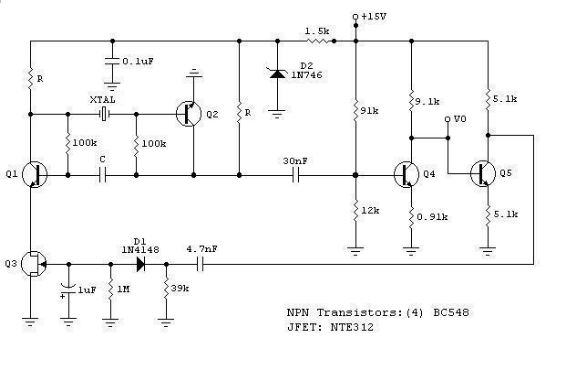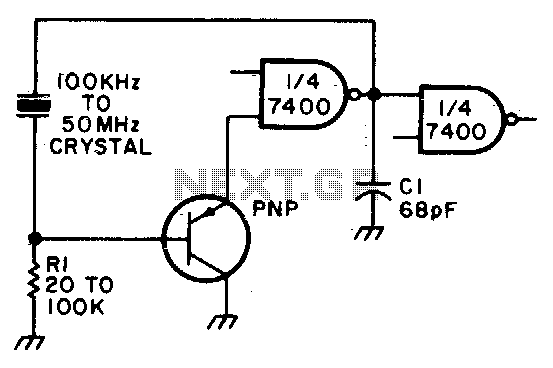
Crystal checker
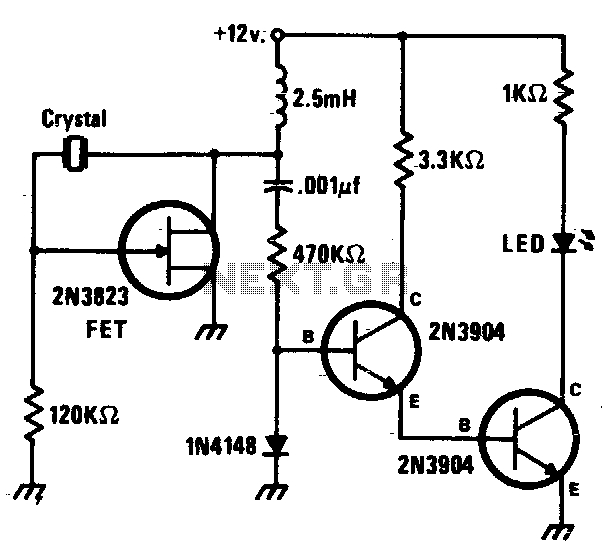
This circuit is a simple Pierce oscillator with an LED go/no-go display. The checker works best with crystals having fundamental frequencies in the seven to eight megahertz range.
The Pierce oscillator circuit is a popular choice for generating high-frequency signals, particularly in the range of 7 to 8 MHz, which is ideal for various applications such as RF communication and signal processing. The core of the circuit consists of an inverter or a CMOS gate configured to provide the necessary feedback for oscillation.
In this configuration, a quartz crystal is connected between the output and the input of the inverter, establishing a resonant circuit that determines the oscillation frequency. The LED go/no-go display is integrated into the circuit to provide a visual indication of the oscillator's operation. When the oscillator is functioning correctly, the LED will illuminate, signaling that the circuit is oscillating at the desired frequency. Conversely, if the LED remains off, it indicates that the oscillator is not functioning, which may be due to issues such as incorrect crystal selection, improper connections, or component failures.
The circuit typically includes a few passive components such as resistors and capacitors, which help to stabilize the oscillation and set the amplitude of the output signal. The choice of these components, along with the crystal, will significantly affect the performance and stability of the oscillator. Proper layout and grounding techniques are also essential to minimize noise and interference, ensuring reliable operation in practical applications.
Overall, this simple Pierce oscillator design with an LED indicator serves as an effective tool for testing and verifying the functionality of quartz crystals within the specified frequency range.This circuit is a simple Pierce oscillator with an LED go/no go display Checker works best with crystals having fundamental frequencies in the seven to eight megahertz range.
The Pierce oscillator circuit is a popular choice for generating high-frequency signals, particularly in the range of 7 to 8 MHz, which is ideal for various applications such as RF communication and signal processing. The core of the circuit consists of an inverter or a CMOS gate configured to provide the necessary feedback for oscillation.
In this configuration, a quartz crystal is connected between the output and the input of the inverter, establishing a resonant circuit that determines the oscillation frequency. The LED go/no-go display is integrated into the circuit to provide a visual indication of the oscillator's operation. When the oscillator is functioning correctly, the LED will illuminate, signaling that the circuit is oscillating at the desired frequency. Conversely, if the LED remains off, it indicates that the oscillator is not functioning, which may be due to issues such as incorrect crystal selection, improper connections, or component failures.
The circuit typically includes a few passive components such as resistors and capacitors, which help to stabilize the oscillation and set the amplitude of the output signal. The choice of these components, along with the crystal, will significantly affect the performance and stability of the oscillator. Proper layout and grounding techniques are also essential to minimize noise and interference, ensuring reliable operation in practical applications.
Overall, this simple Pierce oscillator design with an LED indicator serves as an effective tool for testing and verifying the functionality of quartz crystals within the specified frequency range.This circuit is a simple Pierce oscillator with an LED go/no go display Checker works best with crystals having fundamental frequencies in the seven to eight megahertz range.

